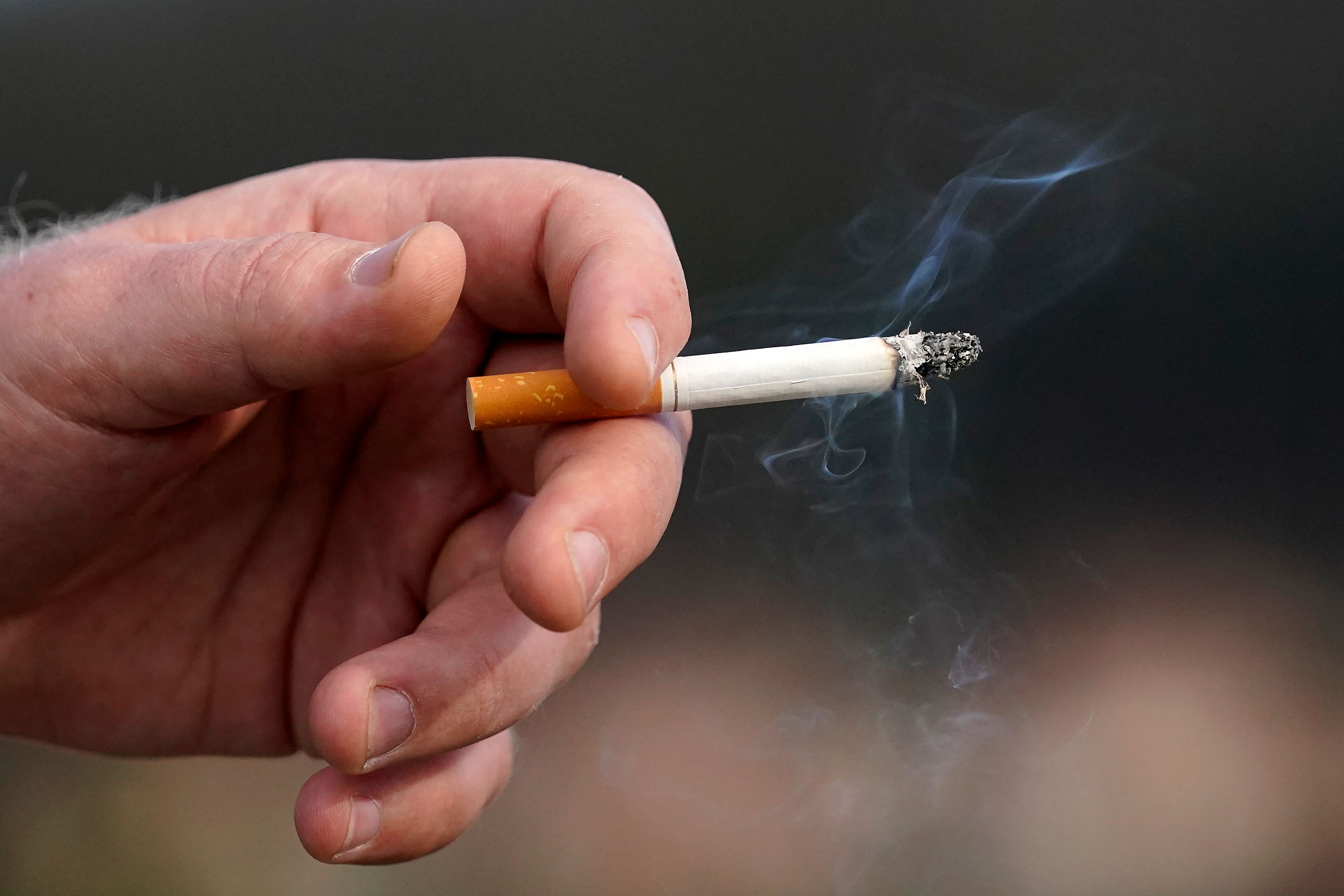Study: U.S. life expectancy declining
Suicides, overdoses few of factors fueling drop
LOS ANGELES — It’s official: Americans are dying much sooner in life.
Preliminary signals of declining health were neither a false alarm nor a statistical fluke. A reversal of American life expectancy, a downward trend that has now been sustained for three years in a row, is a grim new reality of life in the United States.
New research establishes that after decades of living longer and longer lives, Americans are dying earlier, cut down increasingly in the prime of life by drug overdoses, suicides and diseases such as cirrhosis, liver cancer and obesity.
The ills claiming the lives of Americans between the ages of 25 and 64 vary widely by geography, gender and ethnicity. But the authors of the new study suggest the nation’s lifespan reversal is being driven by diseases linked to social and economic privation, a health care system with glaring gaps and blind spots, and profound psychological distress.
The twin trends — an increased probability of death in midlife and a population-wide reversal of longevity — set the United States in stark contrast to every other affluent country in the world. Those trends are detailed in a study published Tuesday in the Journal of the American Medical Association.
In an editorial accompanying the new report, a trio of public health leaders said the study’s insight into years of cumulative threats to the nation’s health “represents a call to action.”
If medical professionals and public health experts fail to forge partnerships with social, political, religious and economic leaders to reverse the current trends, “the nation risks life expectancy continuing downward in future years to become a troubling new norm,” wrote Harvard public health professors Dr. Howard K. Koh, John J. Park and Dr. Anand K. Parekh of the Bipartisan Policy Center in Washington, D.C.
The new research offers some new insights into a U.S. epidemic of so-called “deaths of despair.” Long thought to be a phenomenon limited to rural white America, the study reveals that these premature deaths have gained ground in the nation’s suburbs. And it suggests they are making inroads into black and brown populations, whose long history of adversity were thought to have conferred some protection from despair.
From 1959 to 2013, driven strongly by improvements in injury prevention, cancer treatments and heart health, the lifespan of the average American rose by close to a decade, from 69.9 years to 78.9 years. But in 2011, Americans’ lifespans stopped growing.
By 2014, this vital sign of a nation’s health tipped downward. That was followed by another drop in 2015 and, the new study shows, a further decline in 2016.
Looking back over close to two decades of cause-of-death statistics, the new research makes clear that the nation’s slide has been many years in the making. Beginning in the 1990s, Americans between the ages of 25 and 64 — years in which good health and a low risk of death have long been a statistical good bet — began dying at an increasing rate.
And the causes of their deaths were not random. New laws and regulations were reducing some of the leading causes of death in midlife Americans, making cars safer, reducing air pollution and occupational hazards. New medications were reducing deaths resulting from HIV/AIDS. And prevention efforts, including statin medications and a national anti-tobacco campaign, were reducing heart attack deaths among those younger than 64.
But other causes of death were ticking upward in young and middle-age adults.
Between 1999 and 2017, the rate of drug overdose deaths among Americans between 25 and 64 increased close to fourfold, from 6.7 per 100,000 in this age group to 32.5 per 100,000. Rates of suicide in these Americans began to rise in the early 1990s, increasing 38.3 percent (from 13.4 per 100,000 to 18.6 per 100,000) between 1999 and 2017.
Midlife death rates also increased for illnesses that are strongly linked to drug use and alcoholism. Between 1999 and 2017, midlife deaths from alcoholic liver disease grew 40 percent. Deaths from liver cancer in this age group bucked a trend of decline in virtually all cancer deaths to grow 60 percent. And alcohol poisoning deaths among those 25 to 64 rose almost fourfold.
Also on the rise in that period were midlife deaths with less obvious links to psychological distress, including diseases related to high blood pressure, obesity and/or overeating, and “organic mental disorders,” a category that includes such ills as vascular dementia. Deaths caused by pregnancy complications went up nearly 200 percent between 1999 and 2017, and 60 percent between 2010 and 2017.
These deaths were happening nationally, across the lines of gender, age and ethnicity. But some have bitten into populations that had previously been lightly affected by such ills. In 1999, rates of drug overdose death among non-Latino whites between 25 and 64 stood below those of all other ethnic groups. But by 2017, rates of drug fatalities in this group had risen almost seven-fold, ending higher than those among American Indians, black and Latinos.
Women, who have always lagged well behind men in suicide rates, have begun taking their lives at a growing clip since the 1990s. Their rate of death from liver disorders, long a rarity among females, climbed too. And liver failure has been killing even young adults, a group among whom such conditions had been virtually unknown.
It took several years for these deaths to cancel out life-saving progress in other areas of health, Woolf and Schoomaker wrote. But by 2010, the burden of these deaths was becoming evident. Between 2010 and 2017, they calculated that 33,307 deaths resulted directly from this 6 percent rise in mortality among young and middle-aged adults.
These “excess deaths” don’t nearly reflect the number of Americans who have succumbed in midlife to suicide, drug overdoses and chronic conditions during this period. They are instead a tally of how many more-than-expected deaths happened because midlife mortality rose between 2010 and 2017.
It may seem like a modest number, said Dr. Woolf. But those “excess deaths” are the equivalent of almost three full Boeing 737s crashing every month for seven years. And they have made the United States the only high-income country in which life expectancy is moving in the wrong direction.
Moreover, after years during which minority populations appeared to resist the trend of rising midlife death rates, the scourge of opioid addiction, at least, has begun to infect those groups. Between 2010 and 2017, the non-Latino black population outpaced all other ethnic groups in the rise of fatal drug overdoses (171.6 percent) among those between 25 and 64, Woolf and Schoomaker found. Increasing drug-overdose rates among Latino and black populations have “erased years of progress in lowering mortality rates” among minorities, Woolf wrote.
Why are lives is the U.S., with higher per-capita health care spending than any other country on earth, growing shorter?
The timing of those excess deaths may offer clues, said Woolf. During the 1980s and 90s and accelerating into the 2000s, middle-class incomes stagnated. Rates of child poverty grew and the rolls of the uninsured swelled. The distribution of wealth in the United States began to concentrate densely at the top of the economic ladder.
Those excess deaths were also geographically concentrated in ways that might offer insights, Woolf added.
Woolf and Schoomaker found that the rise in premature deaths was often most evident in regions and states that have weathered steep job losses, population outflows, and a consequent hollowing out of local civic and social institutions. Many states that have suffered most had a less-educated workforce, and are not magnets for the influx of immigrants, whose arrival might compensate for population loss.
Over the past four decades, the U.S. steel and coal-mining industries have collapsed, automation has eliminated U.S. manufacturing jobs, and industries have moved offshore to find cheaper labor. States like Ohio, Pennsylvania, Kentucky and Indiana underwent profound job losses, a steady decline population, and progressive social changes — from disbanded sports teams and shuttered hospitals and churches to closed barbershops and cafes.
Those four states account for fewer than 11 percent of the U.S. population. But between 2010 and 2017, they were home to nearly one-third of the excess deaths calculated by Woolf and Schoomaker.
Between 2010 and 2017, all but four U.S. states — California, New York, Oregon and Texas — saw death rates among young and middle-aged adults rise. The states that experienced the steepest hikes in premature deaths were New Hampshire, West Virginia, Ohio, Maine and Vermont. And five states — Iowa, New Mexico, Oklahoma, West Virginia and Wyoming — experienced a virtually unbroken string of increases in midlife mortality between 1999 and 2017.
These states’ economic and social woes may stem from a collapse of manufacturing, a farm economy that has suffered setbacks, or the flight of young and educated people to places with jobs and opportunity. Whatever the precipitating event, the economic and social woes of communities “have health consequences,” said Wolfe. “And the more these negative conditions stack up, the harder it gets to argue convincingly they don’t matter,” he added.
The nexus between economic and social hardship and premature death may be despair’s fellow traveler, chronic stress, said Woolf.
Whether it is induced by unemployment, lack of health insurance, loneliness or a loss of hope, chronic stress is linked to depression, hypertension and inflammation.
All are corrosive to good health, Woolf said. And all these conditions often interact in ways that make illness and premature death more likely. Those left behind in broken communities are more likely to drink too much alcohol, and to exercise less. They may medicate their pain with addictive drugs, and rely on inexpensive fast food to feed themselves and their children. They might skip their blood pressure pills, get lax about controlling their diabetes, and put off going to a doctor. When depression or addiction sets in, professional help can be hard to find.
We may not have seen the bottom, either.
“The root causes of the problem — which stem from the decline of the working class, the erosion of families, communities, and social capital, and an inadequate public health care system — these are not going away,” said Brookings Institution scholar Carol Graham, who studies the rise and fall of happiness in societies. “Even worse, those problems are likely to spill over into the next generation.”
Many of those who have died from deaths of despair, or who are traveling that path, will leave behind children stressed from experiences ranging from general neglect to witnessing their parents’ overdoses.
These experiences, Graham said, “will have a long reach into their adulthood.”
TNS








